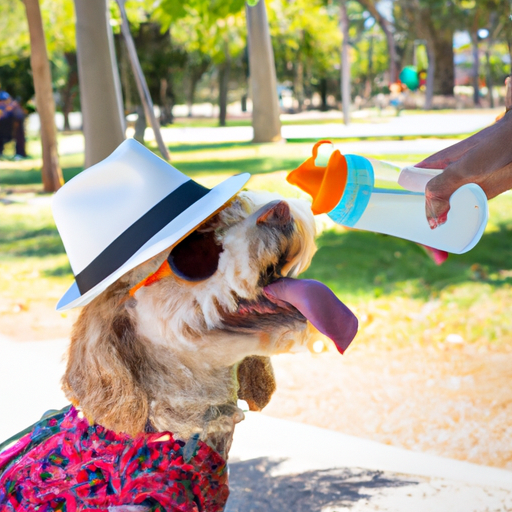As a dedicated caregiver to your four-legged friends, you know that their health and comfort are of utmost importance. One of the most significant risks they face in the warmer months is heat stroke, a condition that can be fatal if not noticed and treated promptly. In this guide, we will walk you through the necessary steps to prevent heat stroke in dogs.
Understanding Heat Stroke
Heat stroke, or hyperthermia, is a condition that occurs when a dog’s body temperature rises above the normal range (101.5°F) and can’t cool down. This can lead to multiple organ failure and even death if not treated immediately.
Dogs, unlike humans, don’t sweat to cool down. They pant. However, panting is not enough when the temperature is too high, and that’s when heat stroke can occur.
Recognizing the Signs of Heat Stroke
You need to recognize the symptoms of heat stroke in dogs. The sooner you spot these signs, the better the chances of survival.
- Excessive panting and drooling
- Reddened gums
- Vomiting or diarrhea
- Lethargy or weakness
- Loss of coordination or unconsciousness
Preventative Measures Against Heat Stroke
Preventing heat stroke is crucial, and here are some measures you can take:
-
Provide Adequate Shade and Water: Always ensure your dog has access to a shaded area and fresh water when outside.
-
Avoid Peak Heat Hours: Try to avoid taking your dog out during the peak heat hours (usually from 10 am to 4 pm).
-
Never Leave Your Dog in a Parked Car: Even with the windows cracked, the temperature inside a car can rise rapidly leading to heat stroke.
-
Use Cooling Products: Cooling mats, vests, or bandanas can help keep your dog’s body temperature down.
Immediate Actions to Take if Heat Stroke Happens
If you notice signs of heat stroke in your dog, it’s important to act quickly.
- Move your dog to a cooler area immediately.
- Offer fresh, cool (not cold) water, but don’t force them to drink.
- Apply cool (not cold) water to their body, especially the head and neck. Avoid submerging them in cold water as it can lead to shock.
- Get them to the vet as soon as possible.
Understanding the Risk Factors
Certain factors can increase your dog’s risk of suffering from heat stroke.
| Risk Factor | Explanation |
|---|---|
| Breed | Brachycephalic breeds like Bulldogs, Pugs, and Boxers are more susceptible. |
| Age | Puppies and older dogs are at higher risk. |
| Weight | Overweight dogs are more prone to heat stroke. |
| Health Condition | Dogs with heart or respiratory conditions are more vulnerable. |
FAQ’s
Q: Can heat stroke have long-term effects on my dog?
A: Yes, heat stroke can lead to organ damage, seizures, blood clots, and other serious complications.
Q: How quickly can heat stroke occur in dogs?
A: It can occur in just a few minutes, especially in high-risk dogs left in hot environments.
Q: Can heat stroke reoccur?
A: Yes, once a dog has suffered from heat stroke, they are more likely to experience it again.
Q: Can I use ice to cool down my dog during a heat stroke?
A: No, using ice or extremely cold water can lead to shock. It’s better to use cool water and get them to the vet immediately.
Q: Is heat stroke in dogs always fatal?
A: No, but it is a serious condition. Immediate treatment can increase the chances of survival.
Your role as a caregiver is pivotal in preventing heat stroke in dogs. By knowing the signs, understanding the risks, and taking the right preventative measures, you can ensure your dog stays safe and comfortable, even in the heat of summer.



